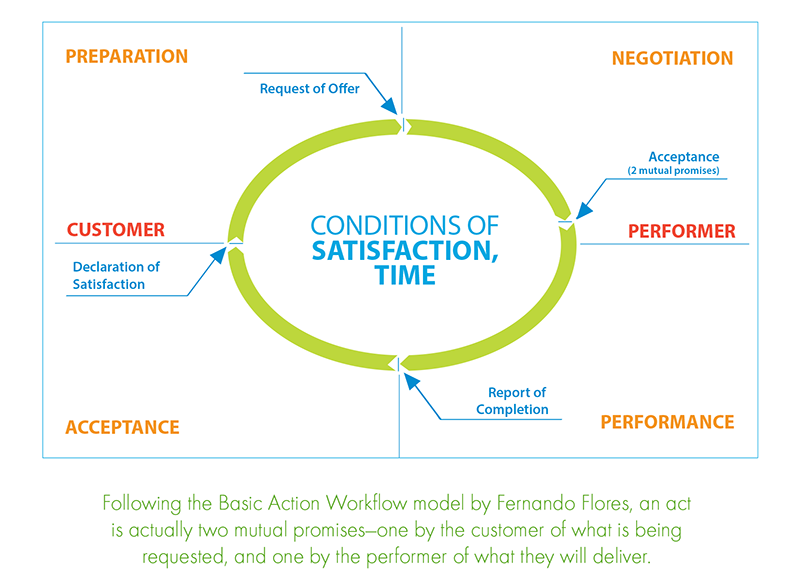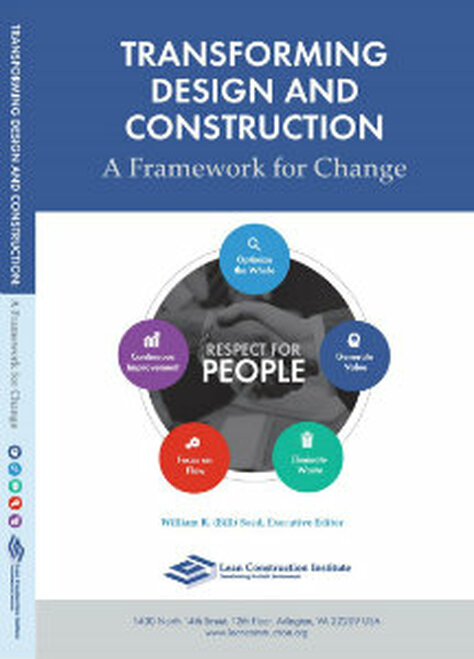Conditions of Satisfaction
(CoS)
An Introduction to Conditions of Satisfaction (CoS)
In the design and construction industry, 70% of projects are delivered late and over-budget. The Lean Construction Institute aims to change that with a shift towards Lean thinking.
Lean Project Delivery models have proven to be more effective at meeting time and budget goals thanks to the focus Lean methods have on collaboration and aligned goals between the various teams on a project.
However, sometimes it can be difficult to maintain alignment on goals in accordance with what the stakeholders need. Conditions of Satisfaction (CoS) guide the various team members on a project to make decisions that best benefit the project and its outcome.
Each CoS is a commitment, and all team members are responsible for delivering according to the CoS. By agreeing to and signing up to the CoS, the project team members make a Reliable Promise to one another. This behavior is aligned with the culture that needs to be present on a Lean/IPD Project.
It’s crucial that the CoS clearly define “satisfied” with tangible, measurable aspects that the team can use to know if the project is an objective success.
What Does CoS Mean?
Conditions of Satisfaction are an explicit description by a customer of all the actual requirements that must be satisfied by the performer in order for the customer to feel that he or she received exactly what was wanted. In design and construction, the “customer” is the owner of the project.
Conditions of Satisfaction Examples
Projects generally have between 8 and 15 individual Conditions of Satisfaction. When preparing the conditions, be careful not to include more than is necessary or the project can get bogged down and sidetracked.
Remember that these are critical conditions for the project to be defined as a success, not wishes that the teams or owner may have for the project. Decisions about the project will be based on alignment with the CoS.
Often budget, schedule, and safety are addressed. Potential CoS examples include:
- Number of months in which a project is delivered
- Number of RFIs
- Number of Change Orders
- Number of punch list items
- Percentage of below market cost
- Percentage of operational cost improvement
- Percentage improvement in productivity
- Rapid improvement
- Exceptional teamwork
- All schedules developed and executed using the Last Planner System®
- Total project transparency
- Strong stakeholder involvement
When crafting your list of Conditions of Satisfaction, make sure not to rank them by “importance.” In the end, all of these conditions will need to be satisfied over the course of the project. Prioritizing certain conditions over others just tempts team members to neglect some of the conditions.
Elements of a Promise
In order for a promise to be quantifiable, it also needs to be declarative. “I will” or “I will not” are solid promises. “Maybe” or “I will try” are not promises and should not be language included in the Conditions of Satisfaction.
At the project level, elements of a promise in Conditions of Satisfaction include…
The Customer
In design and construction, this would be the owner of the project. They are the ones making the request, asking for a promise to be made and kept.
The Performer
In design and construction, this would be the design team members, builders, and contract workers. They are the ones following through on the promise and completing the project in accordance with the Conditions of Satisfaction.

Negotiated Conditions of Satisfaction
The agreed-upon framework between several parties involved in the project. They are the promise of the work that will be completed. Generally, CoS include a clause rewarding performers for keeping their promises (an incentive) and a clause outlining what will happen if performers do not keep their promises (consequences). Each element of the CoS must contain a clear explanation of how “success” will be measured. It doesn’t necessarily need to be mathematical in nature, but it needs to be tangible and measurable.
CoS: A Culture of Trust
Arguably the most important of the six tenets of the Lean Construction Institute for Lean projects is “Respect for People.” This is no less true when creating Conditions of Satisfaction or when making decisions with them in mind. Conditions of Satisfaction necessarily rely on the ability of the various team members to trust in and communicate with one another.
If you have a habit of delivering on promises, owners and other team members will be more likely to trust that you will follow through on future promises. On the other hand, if you have a track record of breaking promises, your team members will find it harder to trust that you can be relied upon.
How High Performing Teams Help
High-performing teams are built on foundations of trust, even if their members have never worked together in the past. They have a track record of keeping promises and breaking down barriers to continuously find ways to improve and innovate on processes and outcomes.
A high-performing team with a clearly defined set of Conditions of Satisfaction in a Lean Project Delivery model can find much more success in the design and construction industry than a team using a traditional delivery model. Conditions of Satisfaction bind teams to commit their focus to creating as much value as possible, allowing them to deliver an exceptional outcome.
CoS Training
The Lean Construction Institute offers Conditions of Satisfaction training as well as tools, events, education, and networking opportunities for Lean practitioners in design and construction all around the world. Whether you’re a Lean expert or are just learning about Lean for the first time, LCI can provide the tools you need for problem solving and continuous improvement.
Lean Assessments
How strong is your Lean knowledge? Take a Lean assessment to determine your current state so you have a baseline for improvement. Lean assessments are available for individuals, teams, and organizations alike. Whether you’re new to Lean or are an experienced Lean practitioner, Lean assessments are a great way to get started at LCI!
TAKE ASSESSMENTMore Lean Topics
From 5s to IPD, explore popular Lean design and construction topics below.














